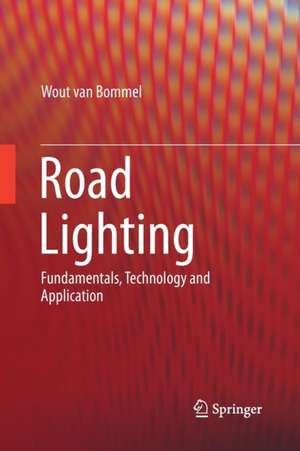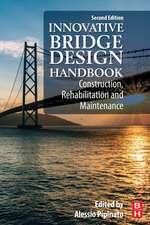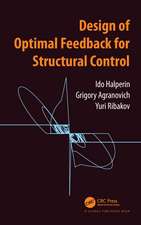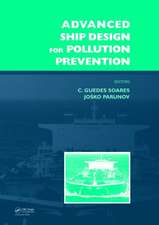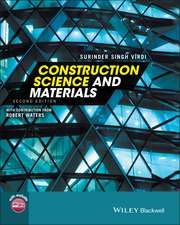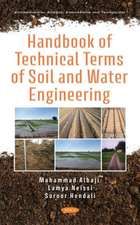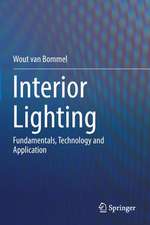Road Lighting: Fundamentals, Technology and Application
Autor Wout van Bommelen Limba Engleză Paperback – 10 sep 2016
This book offers a completely fresh approach to the subject, reflecting how the technology of road lighting has progressed to keep up with the changes in lamp technology, especially in solid state light sources, and the increasing awareness of energy use and environmental issues. The book is divided into three parts.
Part One describes lighting of open roads, with chapters discussing visual performance and comfort (including the effects of mesopic vision and age), and international standards and recommendations for road lighting. Lighting equipment is introduced; specifically lamps and luminaires in terms of their practical properties and features, but also the road surface and its characteristics. A chapter on Lighting Design makes the link between theory and practice, providing the reader with the knowledge needed for effective lighting design, including aspects relating to sustainability. The final chapter of Part One deals with lighting calculation conventions and measurements.
Part Two is devoted to light pollution. The negative consequences of light pollution are described and tactics to restrict light pollution explained. Lighting criteria are defined that can be used by the lighting designer to guarantee installations stay within acceptable limits. International standards and recommendations on the restriction of light pollution are discussed.
Part Three is devoted to tunnel lighting, with chapters discussing visual performance in tunnel environments, lighting criteria, standards and recommendations, and concluding with a chapter on tunnel lighting equipment and design.
This book is a valuable resource for road lighting designers and engineers, students of lighting design and engineering, town planners, traffic engineers, environmental specialists, and lamp and luminaire developers and manufacturers.
| Toate formatele și edițiile | Preț | Express |
|---|---|---|
| Paperback (1) | 763.16 lei 6-8 săpt. | |
| Springer International Publishing – 10 sep 2016 | 763.16 lei 6-8 săpt. | |
| Hardback (1) | 995.02 lei 6-8 săpt. | |
| Springer International Publishing – 8 dec 2014 | 995.02 lei 6-8 săpt. |
Preț: 763.16 lei
Preț vechi: 897.83 lei
-15% Nou
Puncte Express: 1145
Preț estimativ în valută:
146.03€ • 159.12$ • 123.05£
146.03€ • 159.12$ • 123.05£
Carte tipărită la comandă
Livrare economică 23 aprilie-07 mai
Preluare comenzi: 021 569.72.76
Specificații
ISBN-13: 9783319378350
ISBN-10: 331937835X
Pagini: 355
Ilustrații: XXI, 334 p. 193 illus., 59 illus. in color.
Dimensiuni: 155 x 235 x 19 mm
Greutate: 5.39 kg
Ediția:Softcover reprint of the original 1st ed. 2015
Editura: Springer International Publishing
Colecția Springer
Locul publicării:Cham, Switzerland
ISBN-10: 331937835X
Pagini: 355
Ilustrații: XXI, 334 p. 193 illus., 59 illus. in color.
Dimensiuni: 155 x 235 x 19 mm
Greutate: 5.39 kg
Ediția:Softcover reprint of the original 1st ed. 2015
Editura: Springer International Publishing
Colecția Springer
Locul publicării:Cham, Switzerland
Cuprins
Part I: Road Lighting.- Purpose and Benefits of Road Lighting.- Basic Lighting Quantities.- Visual Performance for Motorists.- Visual Comfort for Motorists.- Visual Performance, Comfort and Pleasantness for Pedestrians, Cyclists and Residents.- Mesopic Vision.- Age Effects.- Lighting Quality Parameters.- Standards and Recommendations.- Equipment: Lamps and Gear.- Equipment: Luminaires.- Equipment: Road Surfaces.- Design Aspects.- Calculations and Measurements.- Part II: Light Pollution.- Purpose of Light-Pollution Restriction.- Light-Pollution Parameters.- Standards and Recommendations.- Equipment and Design Aspects.- Part III: Tunnel Lighting.- Purpose and Benefits of Tunnel Lighting.- Visual Performance and Sense of Confidence.- Standards and Recommendations.- Equipment and Design Aspects.- Appendix A: Illuminance Formulas.- Appendix B: Visibility Formulas.- Appendix C: Calculations of Qo from R-tables.
Notă biografică
Prof. Wout van Bommel MSc worked for more than 35 years with Philips Lighting in different lighting application functions. He has carried out research into many different lighting subjects. His research work has been the basis for concepts now used in international standards for lighting.
From 2003-2007, he was President of the International Lighting Commission, CIE. From 1988-2008, he was the Dutch representative of the European Lighting Normalisation Committee CEN TC 169. He is currently a board member of the Dutch "Light & Health Research Foundation," SOLG.
In 2004, Wout van Bommel was appointed Consulting Professor at the Fudan University of Shanghai, and in 2008, External Examiner of the Master Course "Light and Lighting" at the University College of London (UCL, Bartlett Institute).
He has published more than 150 papers in national and international lighting journals in different languages. All over the world he has presented papers, has taught at universities and schools, and has given invited lectures at conferences.
After his retirement from Philips Lighting, he began advising lighting designers, researchers, companies, municipalities, and governmental bodies, as an independent Lighting Consultant.
He is currently Section Editor for the section titled "Lighting" for the Encyclopedia of Color Science and Technology.
From 2003-2007, he was President of the International Lighting Commission, CIE. From 1988-2008, he was the Dutch representative of the European Lighting Normalisation Committee CEN TC 169. He is currently a board member of the Dutch "Light & Health Research Foundation," SOLG.
In 2004, Wout van Bommel was appointed Consulting Professor at the Fudan University of Shanghai, and in 2008, External Examiner of the Master Course "Light and Lighting" at the University College of London (UCL, Bartlett Institute).
He has published more than 150 papers in national and international lighting journals in different languages. All over the world he has presented papers, has taught at universities and schools, and has given invited lectures at conferences.
After his retirement from Philips Lighting, he began advising lighting designers, researchers, companies, municipalities, and governmental bodies, as an independent Lighting Consultant.
He is currently Section Editor for the section titled "Lighting" for the Encyclopedia of Color Science and Technology.
Textul de pe ultima copertă
This book outlines the underlying principles on which modern road lighting is based, and provides the reader with knowledge of how these principles should be applied in practice.
It offers a completely fresh approach to the subject, reflecting how the technology of road lighting has progressed to keep up with the changes in lamp technology, especially in solid state light sources, and the increasing awareness of energy use and environmental issues. The book is divided into three parts.
Part One describes lighting of open roads, with chapters discussing visual performance and comfort (including the effects of mesopic vision and age), and international standards and recommendations for road lighting. Lighting equipment is introduced; specifically lamps and luminaires in terms of their practical properties and features, but also the road surface and its characteristics. A chapter on Lighting Design makes the link between theory and practice, providing the reader with the knowledge needed for effective lighting design, including aspects relating to sustainability. The final chapter of Part One deals with lighting calculation conventions and measurements.
Part Two is devoted to light pollution. The negative consequences of light pollution are described and tactics to restrict light pollution explained. Lighting criteria are defined that can be used by the lighting designer to guarantee installations stay within acceptable limits. International standards and recommendations on the restriction of light pollution are discussed.
Part Three is devoted to tunnel lighting, with chapters discussing visual performance in tunnel environments, lighting criteria, standards and recommendations, and concluding with a chapter on tunnel lighting equipment and design.
This book is a valuable resource for road lighting designers and engineers, students of lighting design and engineering, town planners, traffic engineers, environmental specialists, and lamp and luminaire developers and manufacturers.
It offers a completely fresh approach to the subject, reflecting how the technology of road lighting has progressed to keep up with the changes in lamp technology, especially in solid state light sources, and the increasing awareness of energy use and environmental issues. The book is divided into three parts.
Part One describes lighting of open roads, with chapters discussing visual performance and comfort (including the effects of mesopic vision and age), and international standards and recommendations for road lighting. Lighting equipment is introduced; specifically lamps and luminaires in terms of their practical properties and features, but also the road surface and its characteristics. A chapter on Lighting Design makes the link between theory and practice, providing the reader with the knowledge needed for effective lighting design, including aspects relating to sustainability. The final chapter of Part One deals with lighting calculation conventions and measurements.
Part Two is devoted to light pollution. The negative consequences of light pollution are described and tactics to restrict light pollution explained. Lighting criteria are defined that can be used by the lighting designer to guarantee installations stay within acceptable limits. International standards and recommendations on the restriction of light pollution are discussed.
Part Three is devoted to tunnel lighting, with chapters discussing visual performance in tunnel environments, lighting criteria, standards and recommendations, and concluding with a chapter on tunnel lighting equipment and design.
This book is a valuable resource for road lighting designers and engineers, students of lighting design and engineering, town planners, traffic engineers, environmental specialists, and lamp and luminaire developers and manufacturers.
Caracteristici
Provides an extensive update of the classic 1980 text, offering a completely fresh approach and covering the major developments in the field Written by an authority in the field and former President of the International Lighting Commission, CIE Provides the reader with a background of the subject and a knowledge of how these principles should be applied in practice Includes supplementary material: sn.pub/extras
